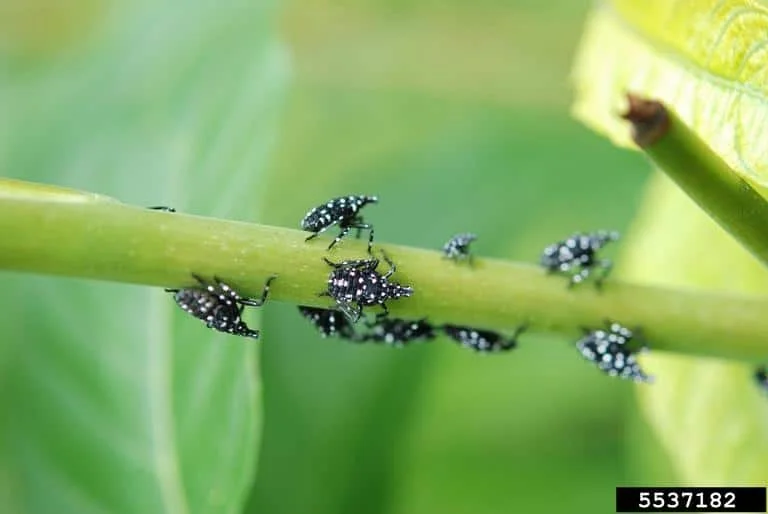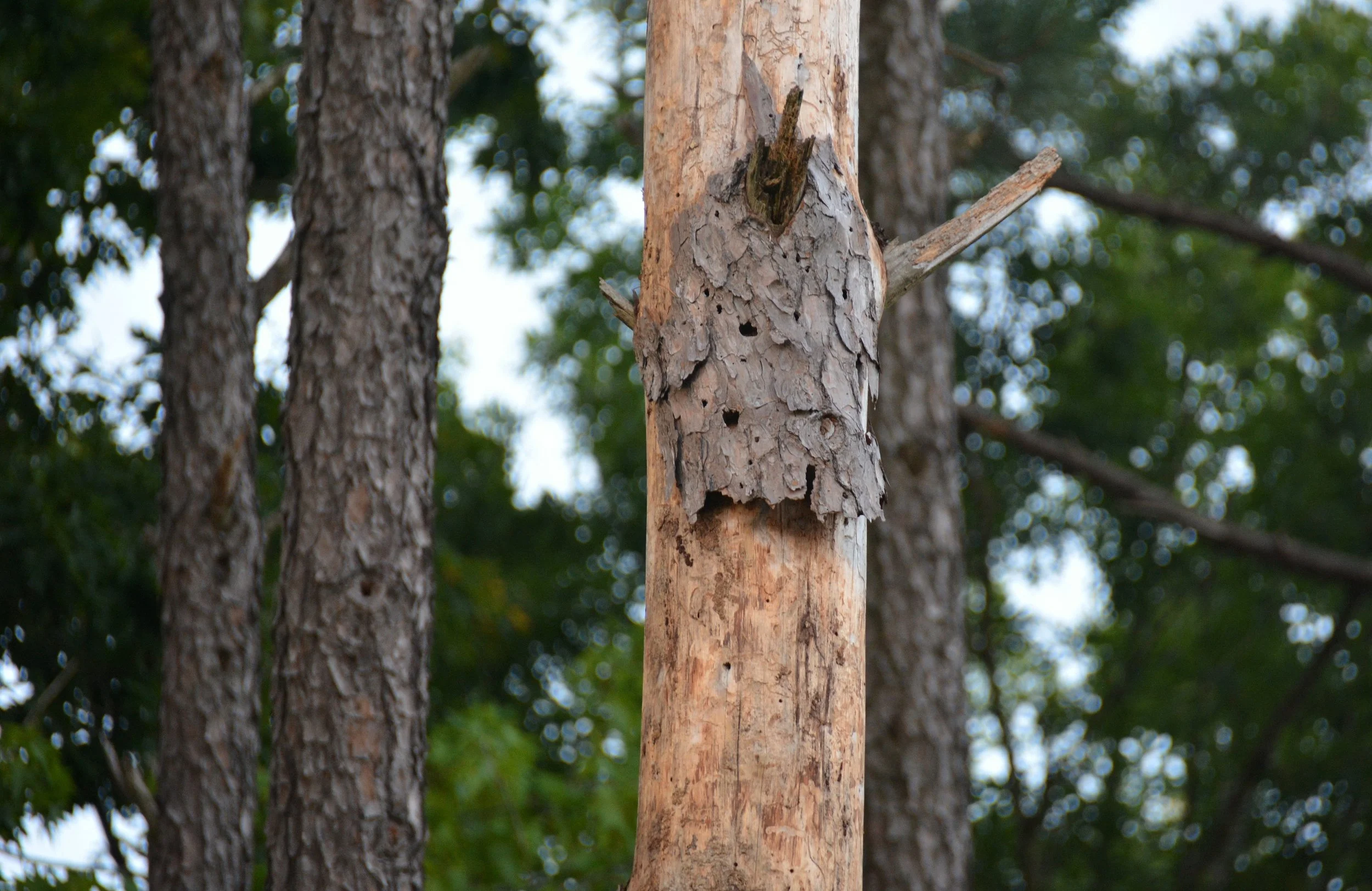Living Shoreline and Habitat Creation at Hillsmere Shores Community Marina
ESA teamed up with Arundel Rivers Federation and Hillsmere Shores Improvement Association to design and oversee installation of a 650-foot-long living shoreline along Hillsmere’s community marina. Arundel Rivers determined that this specific location was the community’s highest priority for coastal resiliency due to lack of natural barriers and increasing storm surges. ESA was excited to be a part of its improvements, focusing on the design, permitting, and construction oversight portion of the project.
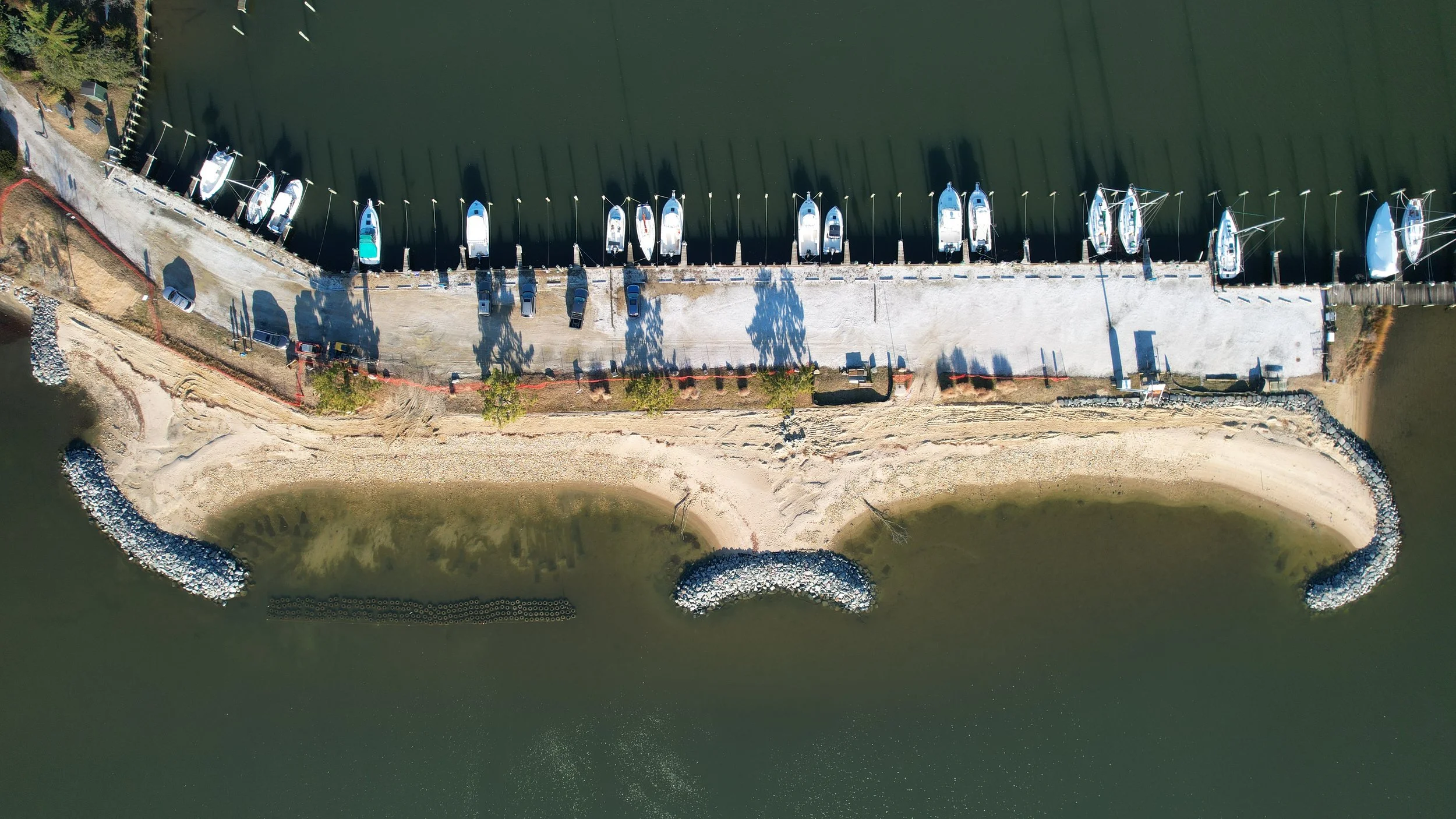


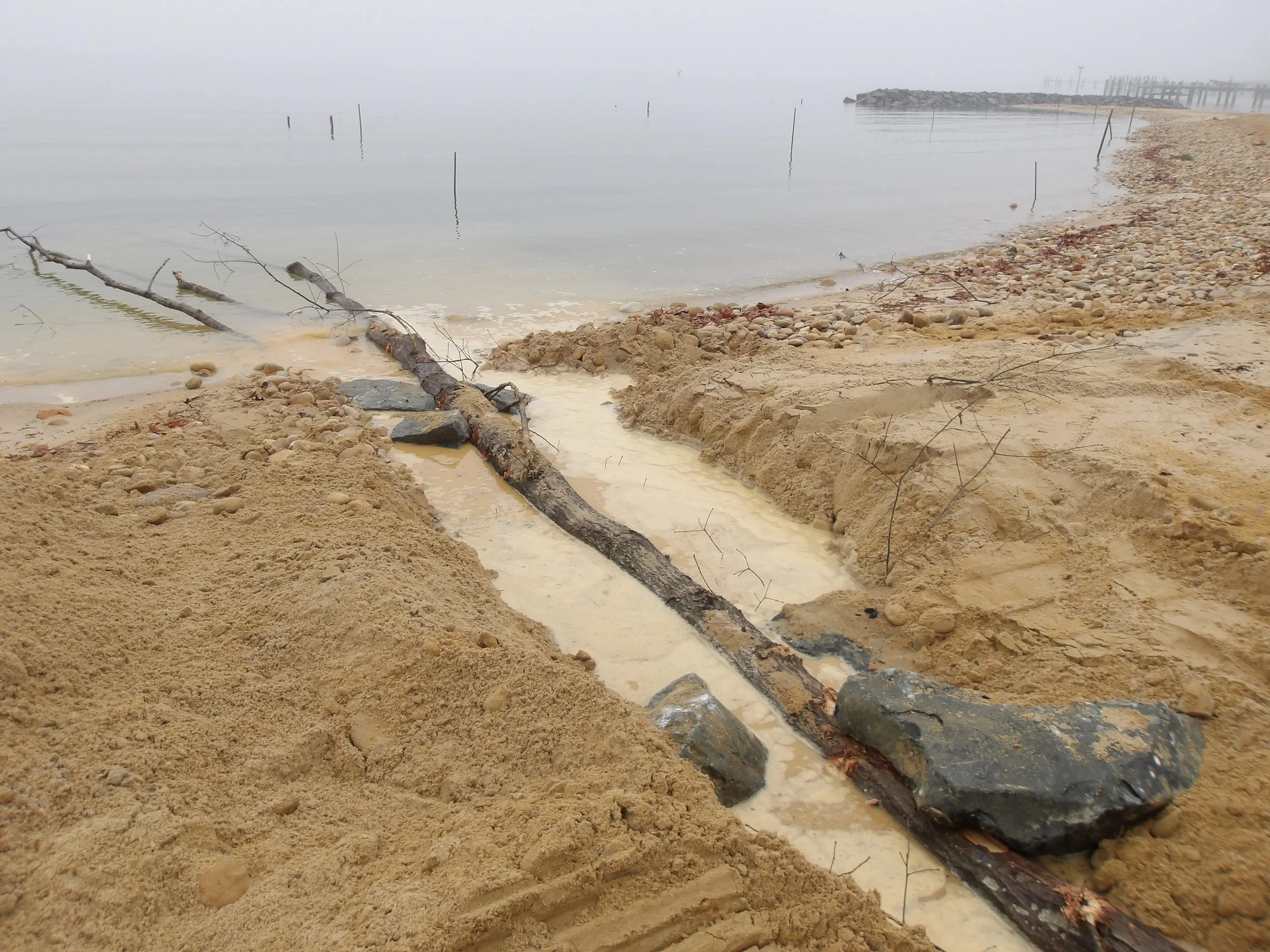
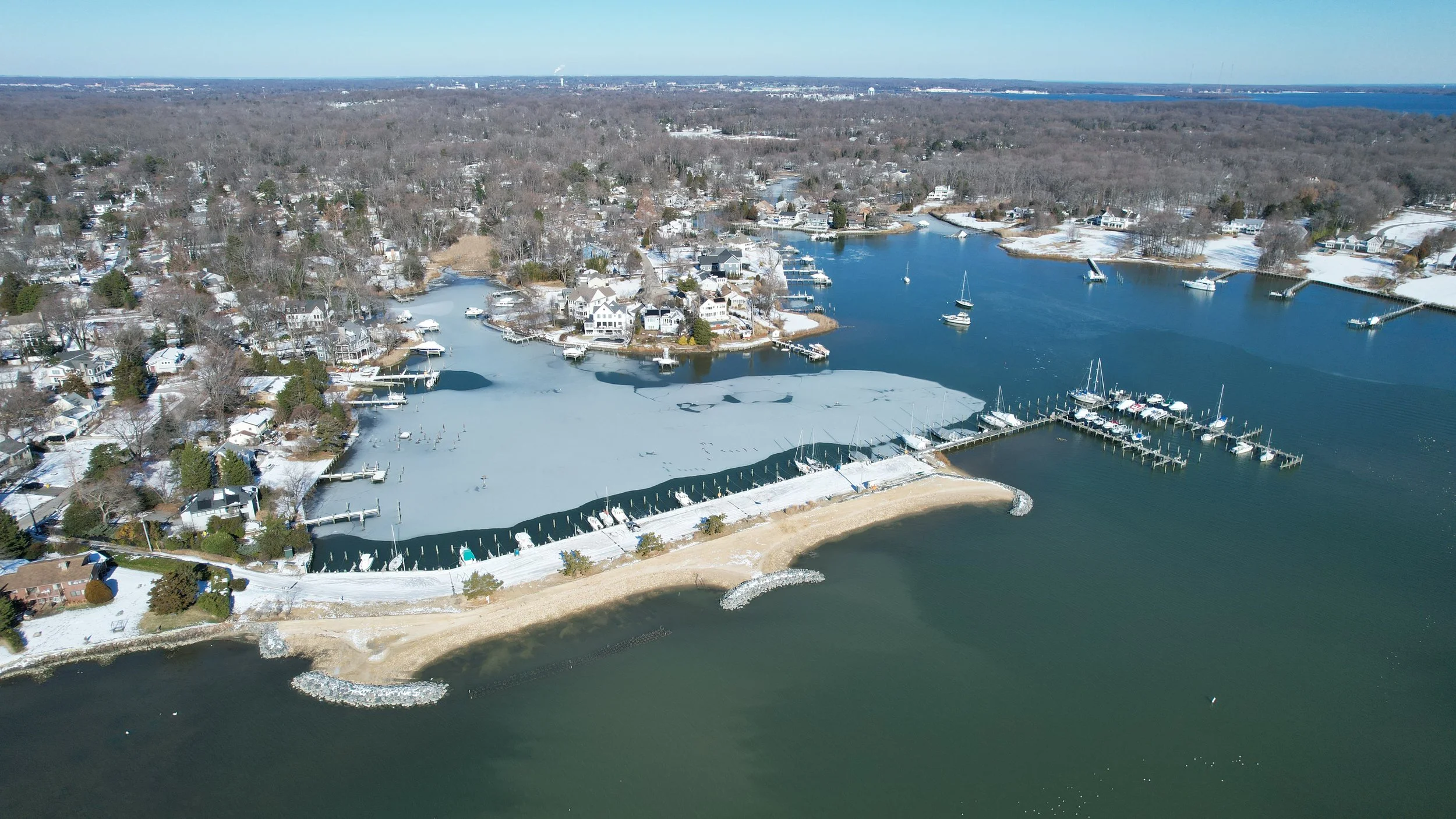
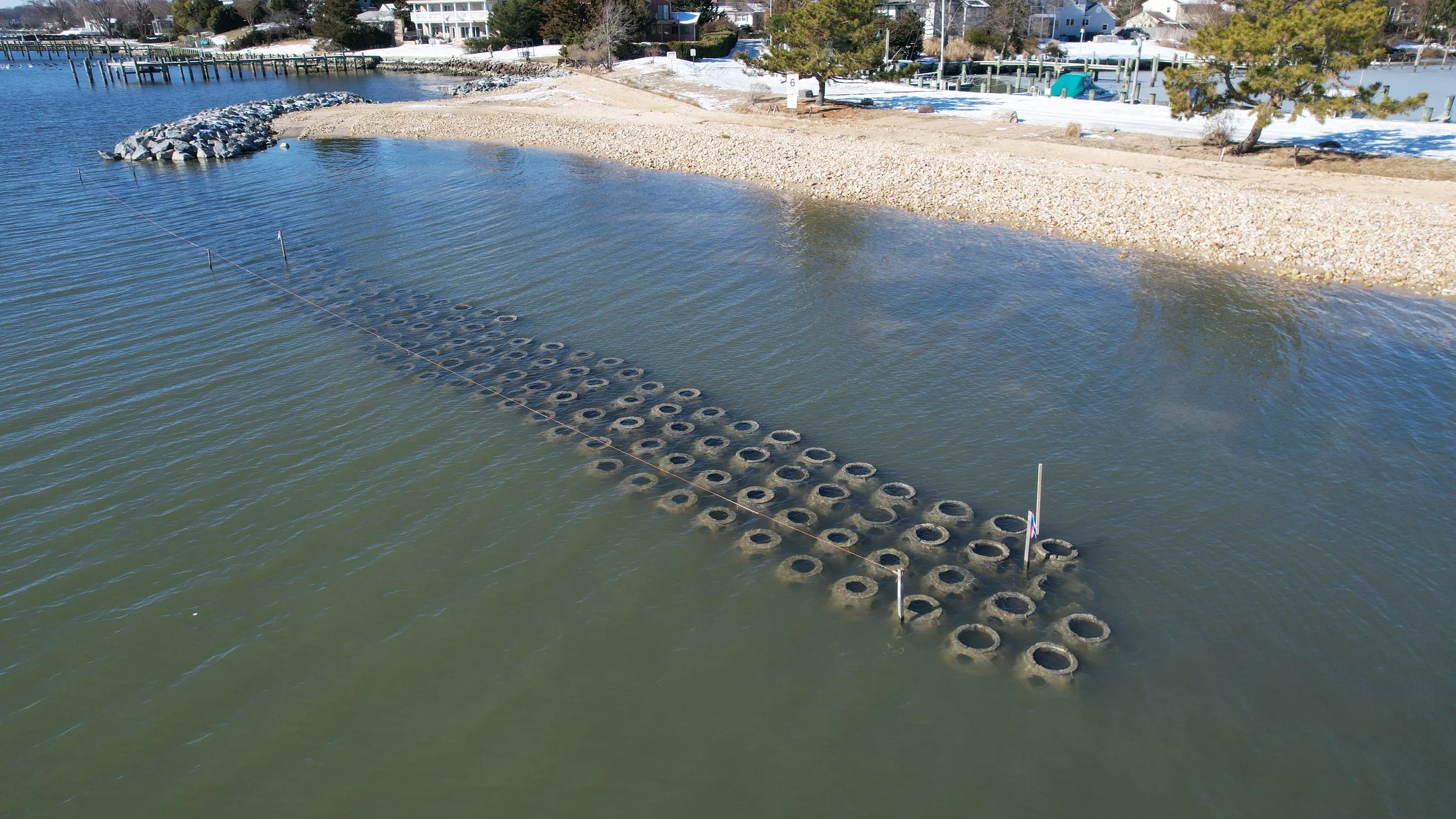
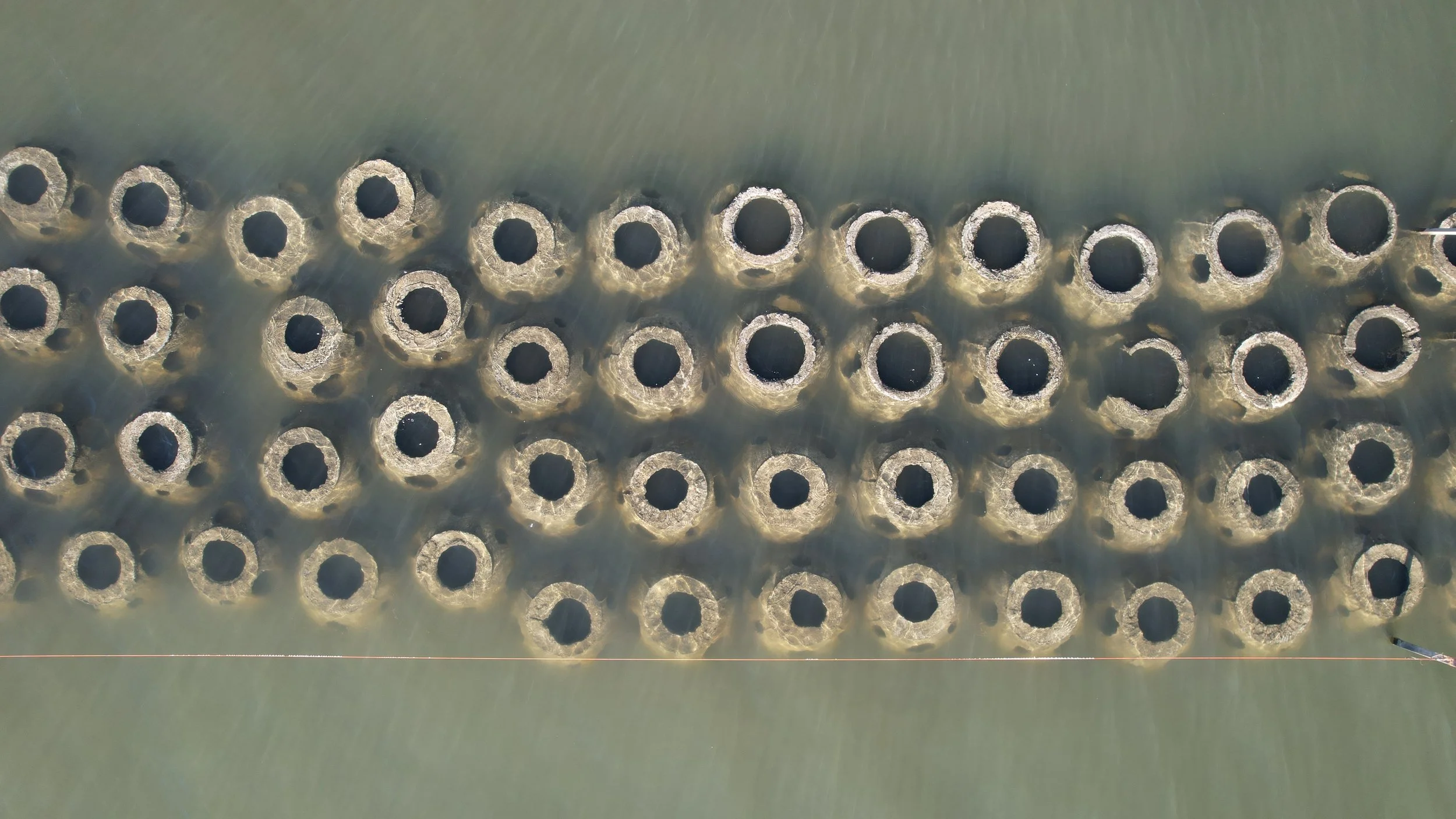
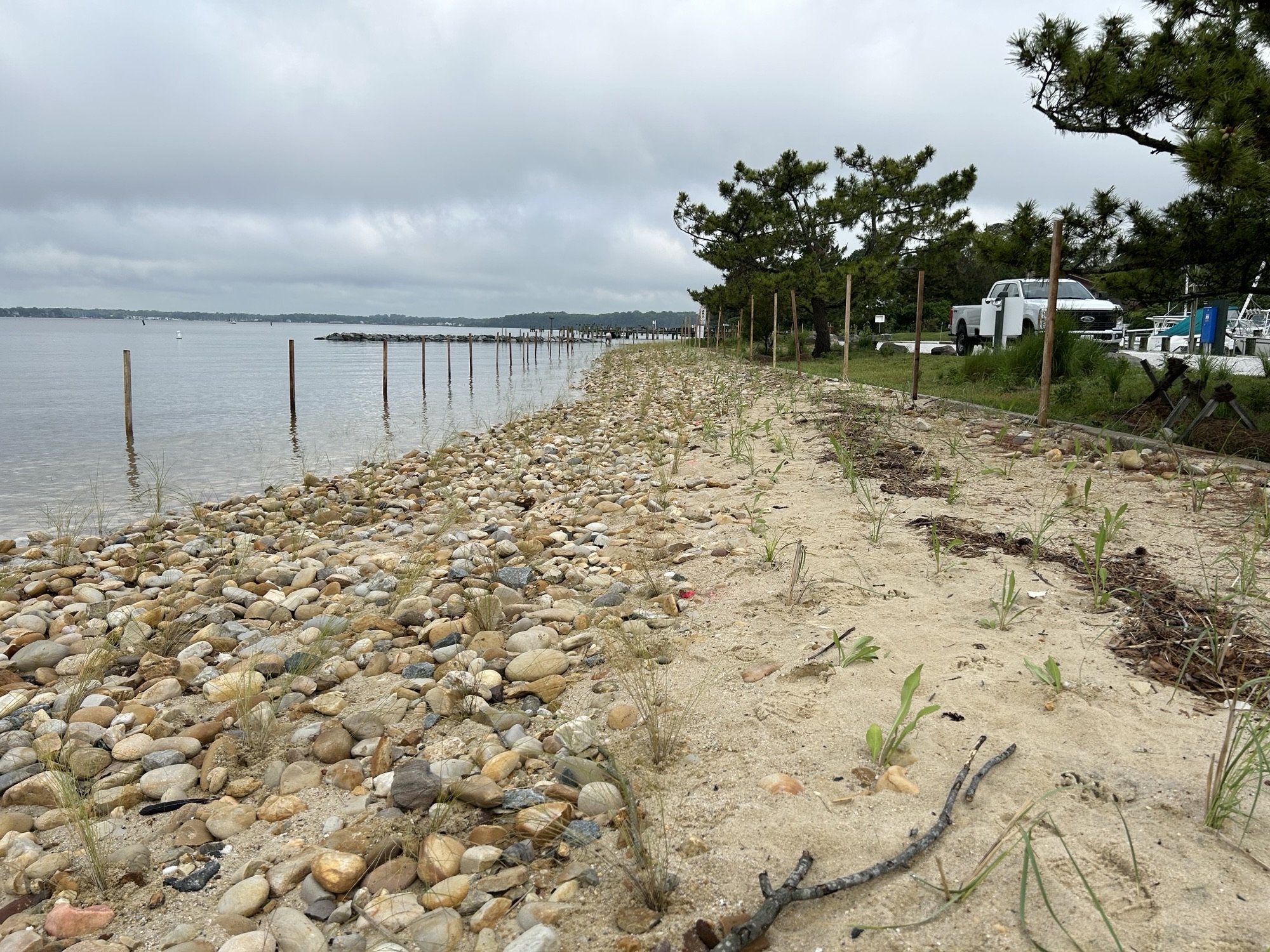
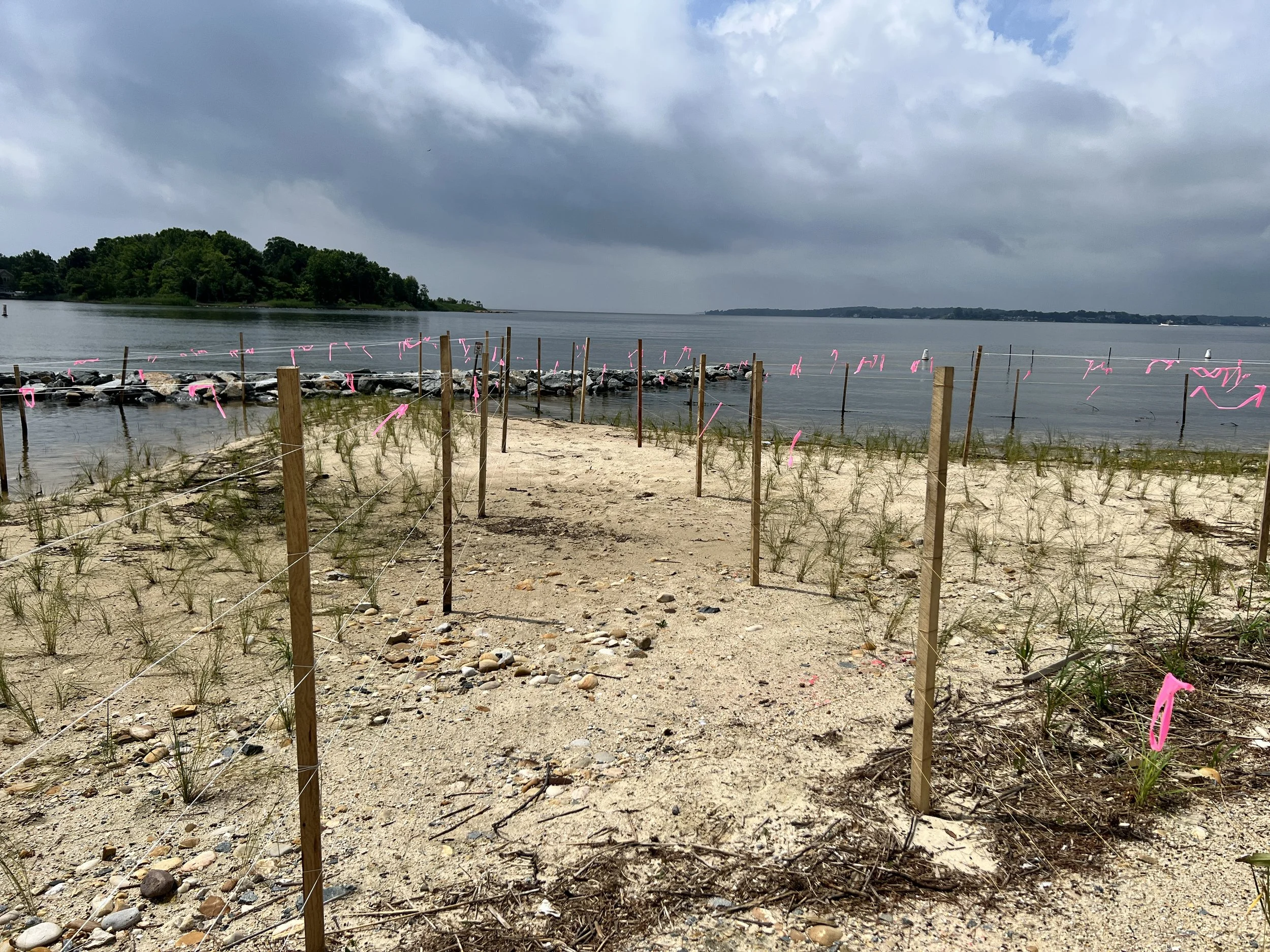
ESA applied coastal engineering analysis to design a plan that provides the marina protection from sea level rise on Duvall Creek in Annapolis, MD. The marina is located on what had previously been a sand spit at the mouth of the creek but was armored with a concrete sea wall and stone revetment that prevented the natural dynamic movement of sands. Erosion from waves crashing over the sea wall was threatening the marina parking lot. A portion of this shoreline has a fetch down the entire length of the Chesapeake Bay, over 130 miles!
The design brought back the natural sand/water interface with beaches, marsh, and dunes. Widely spaced headland structures along the 650-foot-long shoreline, as well as the sand and cobble beach and marsh plantings absorb wave energy while providing a variety of tidal habitats. The marsh and beaches provide habitat for terrapins, horseshoe crabs, and shore birds. Oyster reef balls provide habitat for oysters, fish, and other estuarine invertebrates. They also help clean the water; in just one day, an adult oyster can filter 50 gallons of water! Conservation plantings, dune grasses, and marsh grasses help filter stormwater run-off and hold the soil during storms. Woody debris provides perches for birds, habitat for small animals, and organic material as they decompose into the dunes. The project provides climate change resiliency by buffering storm surge, installing plants adapted to warming temperatures, and creating a migration corridor for tidal marsh as sea levels rise.
Construction by Resource Restoration Group, LLC (RRG) went smoothly in the fall of 2024. During the growing season of 2025, plants were installed and Chesapeake Bay Foundation installed additional reef balls set with oyster spat. Keep an eye out for spawning horseshoe crabs and terrapins. We are sure the Hillsmere Marina shoreline will be enticing!
Resource Restoration Group Installing Oyster Reef Balls. (Video Credit: Arundel Rivers Federation)
Thank you, Arundel Rivers Federation, for allowing us to be part of your mission to protect Anne Arundel County’s waterways. We hope to work with you again in the future!
A Better Defense Against Spotted Lanternflies- Bats!
The invasive spotted lanternfly (Lycorma delicatula) (SLF), native to eastern Asia, and first discovered in Pennsylvania in 2014 has aggressively spread throughout Maryland and surrounding states. This insect damages plants by using their mouthparts to suck sap from trunks and stems and excretes significant amounts of honey dew. This causes stunted growth and localized damage as well as attract and grow sooty mold fungus. SLF are very destructive on grapes and this may greatly affect Maryland’s vineyards.
Thankfully, Rutgers researchers have discovered a native predator for the SLF: bats! Rutgers collected 330 guano samples and discovered that big brown bats (Eptesicus fuscus) as well as Eastern red bats (Lasiurus borealis) had SLF DNA in their guano. This can prove to be revolutionary in the fight to decrease the spread of SLF. Big brown bats are a common and widespread bat species that many homeowners can attract in the eastern United States.
How can you attract bats to your area to help control the invasive spotted lanternfly? Here are some easy solutions:
Potential Bat Habitat: a typical summer daytime roost
1. Provide Roosting Sites:
a. Bat Houses are great for attracting bats. Make sure to place them facing south or southeast for warmth and ensure the area is clear for easy access. Installing several with varying sizes and colors can help accommodate fluctuating temperatures and different bat needs.
b. Provide natural roosts like leaving dead trees or shaggy bark on trees or clearing access to culverts or caves.
2. Provide Food & Water Sources:
a. Plant native vegetation that attracts night-flying insects.
b. Avoid using pesticides (as that kills insect populations).
c. Leave areas un-mowed to encourage insect communities to thrive.
d. Add a water feature to attract insects as well as be a bats’ drinking source.
3. Other Considerations:
a. Keep cats indoors as they are prime predators of bats.
b. Minimize outdoor lighting, especially near bat roosting or feeding areas.
While battling invasive species like the spotted lanternfly, remember that bats also eat mosquitoes—another reason to welcome them to your yard!
Homeowners aren’t alone in desiring to create bat habitat!
Dominion Energy along with a team from Christopher Newport University (CNU) are working to turn power poles into habitat for endangered bats. A simple 3D-printed devise, affectionately called a “Bat Flat”, provides a safe habitat for sleeping bats away from predators. While the devise is patent pending they are hoping the study proves successful and that it’s implemented in other areas. The loss of bat habitat due to urbanization and removal of forest/dead trees is a longstanding problem. But a Bat Flat may offer a more welcome relocation than that of a homeowner’s attic!
Since ESA has previously participated in bat surveys we are fully aware of bat population decline. We are committed to protect bat species by adhering to protective measures throughout the design and construction phases of our projects. We are eager to further educate ourselves and others as we support long-term conservation efforts. Lets all do our part in saving bats and decrease invasive species!
News 12: Bats Are Feasting on Invasive Spotted Lanternflies
whro: "‘A Flat for a Bat’ article
Credit: Katherine Hafner / WHRO News
Frederick Douglass Park on the Tuckahoe
Environmental Systems Analysis, Inc. (ESA) conducted a key environmental assessment for the Frederick Douglass Park on the Tuckahoe in Talbot County, Maryland. ESA uncovered thriving wetlands and centuries-old trees—some possibly alive during Douglass’s lifetime. ESA’s passionate work helped ensure that park development would honor both Frederick Douglas and the land’s ecological richness. It’s a powerful blend of history, stewardship, and storytelling.
Read the full article here: Chesapeake Bay Program – Frederick Douglass Park
To check out previous articles, click “ESA’s Archived Articles” above.



